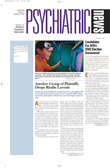In 1793 Philippe Pinel struck the chains binding the lunatic women confined in the French asylum of Bicêtre in Paris. Two hundred years later, the debate about restraint continues in the United States with government involvement at both the federal and state legislative and regulatory levels.
Up to the 19th century, restraint had been widely used in England. The Quaker York Retreat opened in 1796 proposing the use of Moral Treatment without restraint. The name connected most prominently to nonrestraint is Dr. John Conolly, who carried out such a policy when he became superintendent of the Hanwell Asylum in Middlesex in 1839. Conolly had visited the Lincoln Asylum, where Dr. Robert Hill had asserted, “In a properly constructed building with [enough attendants], restraint is never necessary, justifiable, and always injurious.”
Other British asylums also adopted a nonrestraint policy, but while mechanical devices were little used to control patients who were manic or exhibited other disturbed behavior, they used “holding” by attendants and seclusion.
The superintendents of the American asylums, some of whom had visited asylums in Britain, debated the nonrestraint question at their annual meetings. Dr. Luther Bell of McLean Hospital in Massachusetts said at the annual meeting in 1855 that he had visited Hanwell and that “strong rooms” for seclusion and the employment of more attendants had taken the place of straitwaistcoats. The superintendents believed that restraint should be used minimally—and certainly never as punishment—but it could not always be avoided in certain situations, such as those involving suicidality, mania, self-mutilation, and danger to others.
A favorite device in use during the mid-19th century was the “crib bed,” a low, lattice-type bed cage in which the patient was placed (APA has such a bed in the Rare Books Room). No restraints were used on patients placed in this device.
At the annual meeting in 1874, Dr. Ranney of Wisconsin read a paper on restraint, which was followed by a long discussion.
Dr. Ranney encountered much support and no dissent for his position.He pointed out that the use of restraint was limited but nonetheless was required for certain patients. He also noted that England was stepping back from its position of not using restraint. He thought that the quality of the attendant staff and the architecture of the hospital allowing patient classification were important to minimize the use of restraint. The superintendents recognized the danger of abuse by attendants who used restraints but believed that close medical supervision would prevent harm. Dr. Hughes of St. Louis said restraint was a medical question, to be used for curative purposes and on an individual basis.
Dr. (Lord) John Buckmill, a former superintendent of the asylum in Devon, England, and the first honorary member of the superintendents association (which later became APA), had visited American public and private asylums and disagreed with the American viewpoint. At the superintendents’ annual meeting in 1875, he offered a wager of £100 if an American superintendent could find any form of restraint in British asylums in the course of a month-long tour. He had no takers. He later wrote, “[The superintendents] will look back to their defense with the same wonderment. . .that has been said in defense of domestic slavery.”
The debate on restraint, which occupied the association for 50 years, appeared to die down as the use of seclusion and restraint was continued. But recent publicity about deaths of patients while restrained has reawakened public and psychiatric interest. ▪
